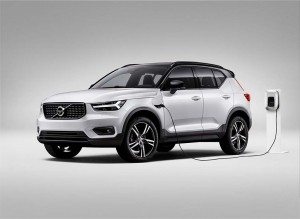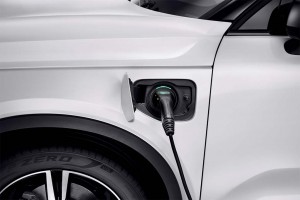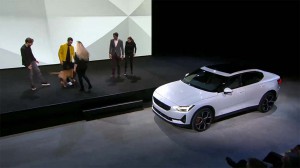
Volvo is going full electric on the XC40 by the end of the year, making it the company's second full-electrified vehicle.
Volvo is expanding its electric vehicle line-up, in a manner of speaking, with the news that it plans to release an all-electric version of its popular small utility vehicle, the XC40, by the end of this year.
The Swedish-based, Chinese-owned automaker recently released its first all-electric vehicle, the Polestar 2 at the Geneva Motor Show. That vehicle will hit the market in 2020. However, Polestar is the Volvo’s performance-oriented all-electric sub-brand so the XC40 news comes as a bit of a surprise.
Following the trend of the industry, late last year Volvo said planned to introduce a slew of new electric products.
Volvo said at the time it expects all-electric, or BEV, models to account for fully half of its global sales by 2025. And that doesn’t include the mild, conventional or plug-in hybrid products that will flesh out the rest of the Swedish automaker’s line-up.
(Volvo raises $677 million with new bond issue. Click Here for the story.)
“Last year we made a commitment to electrification in preparation for an era beyond the internal combustion engine,” said Håkan Samuelsson, president and CEO of Volvo Cars. “Today we reinforce and expand that commitment in the world’s leading market for electrified cars.”

Volvo expects that within the next few years, at least half of the vehicles it sells will come equipped like this.
Samuelsson’s comments fleshed out the plan Volvo announced in 2017 to produce only “electrified” vehicles, starting with new models launching in 2018. The company had not previously given a clear indication of how it saw its mix shaping up, but the latest forecast seems to suggest that Volvo has become increasingly confident about the potential appeal of all-electric drivetrain technology.
The CEO’s comments were made at the Beijing Motor Show where Volvo and dozens of other manufacturers rolled out an assortment of electrified products. That’s no surprise considering new rules the Chinese government recently enacted that require at least 20% of a carmaker’s sales come from so-called “New-Energy Vehicles,” or NEVs, come 2025.
(Click Here for the first look at the Polestar 2.)
There’s some wiggle room in the rules, but they largely focus on all-electric, plug-in or hydrogen vehicles. If the industry hits the target it would translate into at least 7 million cars, trucks and crossovers by 2025.
Considering the booming Asian nation is now Volvo’s single-largest market, it’s no surprise that “China’s electric future is Volvo Cars’ electric future,” or so proclaimed Samuelsson, who runs the Swedish side of Zhejiang Geely, one of that country’s most aggressive domestic automakers. Volvo has also taken the lead in development the underlying platforms and electric drivelines for many of the products to be sold by its parent’s other brands, including Geely and Lynk & Co.
The Swedish-based subsidiary already offers a number of electrified models, including versions of the big S90 sedan and XC90 SUV using the T8 Twin Engine, a plug-in hybrid powertrain, as well as the T5 plug-in plug-in powertrain for the new XC40. In a move meant to signal its new strategy, Volvo displayed only plug-in hybrids at its stand at the Beijing Motor Show.
(To see more about Volvo’s long-term electrification plans, Click Here.)
By 2021, Volvo plans to have five all-electric models in production, three under its brand, two sold through Polestar.

